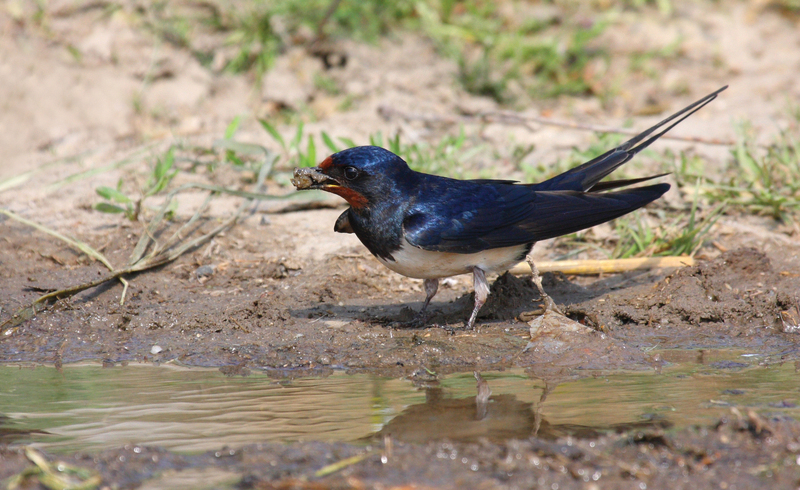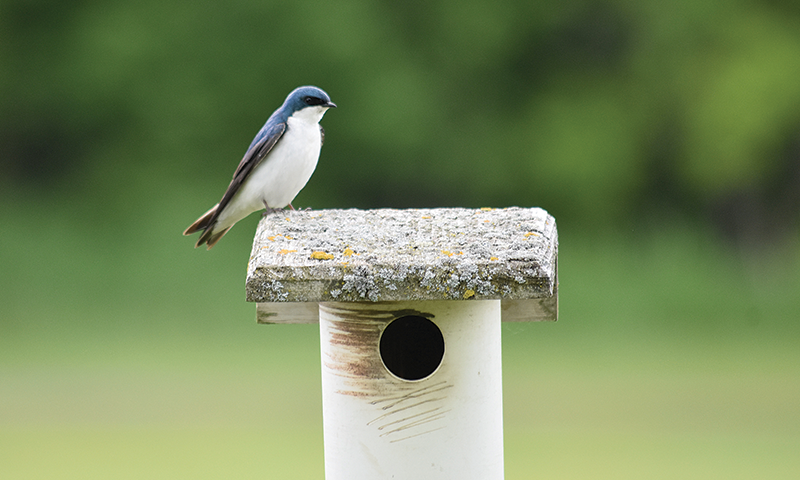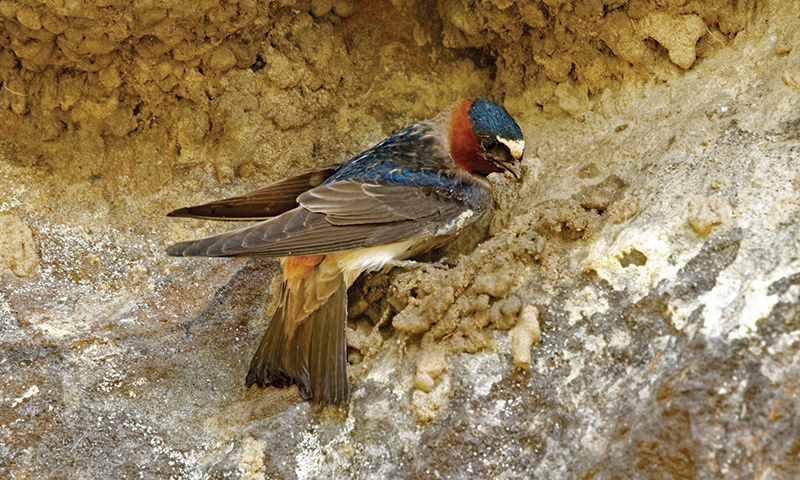Swallows are found around the world, on all continents, including Antarctica. Here in Minnesota, you commonly find three species of swallows: Barn Swallow, Tree Swallow, and Cliff Swallow.

Barn Swallows are sparrow-sized, with a steely blue back, wings and tail, and tan-to-white underparts. Their throat and forehead feature rusty spots. Their tail extends beyond the wingtips and the long outer feathers give the tail a deep fork.
They feed on the fly, snagging insects in flight with rapid wing beats and quick, tight turns and dives. They hunt insects over fields, parks, marshes, ponds, and coastal waters.
Barn Swallows drink and bathe on the wing. They dip down to take a mouthful of water or touch their belly to the surface for a quick rinse.
Barn Swallows make nests from mud in places sheltered from the elements—in shallow caves or on cliff faces, but also barns and other structures.
Both male and female Barn Swallows build the half cup-shaped nest. They collect mud in their bills, sometimes mixing it with grass. Barn Swallows lay 1–2 broods per breeding season, with 3–7 eggs each. The eggs are creamy white, spotted with brown and gray.

Tree Swallows are also small, sparrow-sized birds. They have pointed wings and a short, squared or slightly notched tail. Adult males are blue-green above and white below, with blackish flight feathers. They tend to glide in flight more than other swallow species.
Tree Swallows are named for their habit of building nests in tree cavities. Natural hollows are becoming harder to find so Tree Swallows will also use nest boxes—often those set out for bluebirds.
Tree Swallows live on a diet of insects, supplementing with plant foods when insects are scarce. They eat a variety of flying insects, like flies, mayflies, sawflies, bees, wasps, and dragonflies. They also eat spiders and moths.
The female Tree Swallow does most of the nest building. The nest is made mostly of grasses, but can include pine needles, mosses, and animal hair and is lined with feathers. They lay 1–2 broods each breeding season, with 4–7 eggs each. The eggs, which start out as a pale pink, become white after
a few days.

Cliff Swallows look brownish with dark throats and white underparts, but in good light you’ll see their iridescent dark blue backs and pale underparts, with a rusty patch on their rumps. They have a brick red-colored ring around their head and a white forehead patch.
When feeding in flocks with other swallows, Cliff Swallows tend to stay higher in the air. They eat flying insects, feeding usually in groups of at least two, sometimes up to hundreds. They feed over lakes, ponds, marshes, and rivers. Cliff Swallows eat flies, bees, wasps, ants, moths, and more.
Cliff Swallow pairs choose a colony, taking over an existing nest or starting a new one. Some colonies can number up to 1,000 nests. Colonies appear on cliff sides, caves, building eaves and highway overpasses. They gather bits of mud in their beaks and mold them into place, until the nest has a gourd shape. The nest is lined with dried grass.
Cliff Swallows lay 1–2 broods each season, with 1-6 eggs each. The eggs are creamy white with brown speckles or blotches.
In addition, Minnesota hosts Purple Martins (a type of swallow), Bank Swallows, and Rough-winged Swallows.
Adapted from the July/August 2021 Bird’s-Eye View Newsletter.
Article by Guest Contributor MELISSA BLOCK

